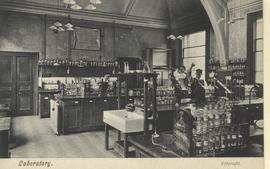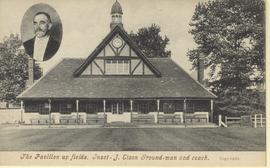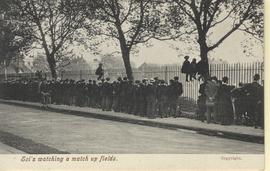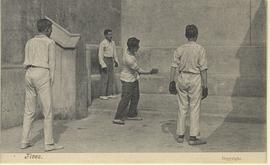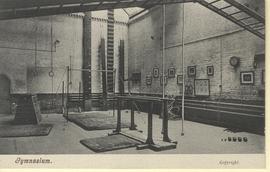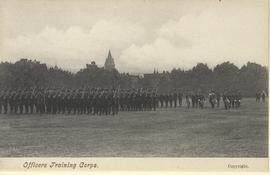Pancake day in College Hall Kitchen
- GB 2014 WS-02-POS-01-36
- Item
- c.1911
One copy annotated on reverse by R.S. Chalk, as follows:
'Memories 1920-1924
It was not until 1959 (as a senior OW) that I ever set foot in this ‘terra incognita’- reputed in our day to be a vast subterranean vault.
Under Mr. Flynn, College Butler (toothless and be-wigged) food in Hall, tho’ plain and unexciting, was plentiful-a welcome contrast to RR, with its single ‘barge’ at breakfast and tea and its dismal menu of lentil, stock-fish or rock-buns in Hall.
From 1922 Mr. Flynn was succeeded as Supervisor by the up-to-date and fully trained Miss Ridge. (To our joy the kindly Miss Flynn was retained in charge of “Flinnery”, ie the service-pantry). Under her, food soon became varied, imaginative and (despite the inevitable grumbles of fastidious T.BB) definitively good.
Pancakes had previously appeared on Shrove Tuesday, but now we had on occasions at mid-day Hall salmon, rabbit (dubbed ‘poor Puss’ by TBB), pickles with cold meat and even (in a heat wave) lemonade and strawberries. For evening Hall (tea) the great standby was ‘choufleur-au-gratin’, which could be found ready at any time by late-returning Watermen.'


